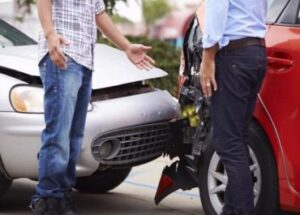
Determining who is at fault in a car accident involves identifying who was careless or negligent while driving. Some scenarios occur that make it very easy to prove who is at fault in a car crash, but there are other cases where it is difficult to determine the driver at fault. Insurance companies and law enforcement agents are usually responsible for determining fault in a Connecticut car accident.
The two agencies find the at-fault driver by assessing property damage and bodily injuries sustained in the accident. It is essential to determine who is at fault in a car crash because the at-fault driver is legally responsible for the injured party’s damages, both to the vehicle and the individual.
Use Police Reports
One of the primary sources of determining the at-fault driver in a car accident is police reports. When a collision occurs, the first point of call is the police. When the law enforcement officer gets to the crash scene, they will complete a report on the occurrence. A police report may include who the officer thinks is responsible for causing the accident. Police reports are vital, principally to insurance companies and lawyers.
Get Eyewitness Report
Another major step in determining the at-fault driver is for every party involved in the accident to provide relevant information about what happened. The court could call bystanders or witnesses present at the time of the accident to give their testimonies.
Witnesses become very crucial in selecting the at-fault driver, especially if it is not easily determined. For instance, some drivers are unwilling to accept responsibility for the accident caused; in this case, the court will ask for a witness.
If It Was a Rear-End Accident
If a rear-end collision caused the accident, proving fault becomes more straightforward; the driver who hit the person in front of them is, most times, at fault. This is because there is an established distance rule that you are to give the vehicle in front of you adequate space.
It does not matter if the driver in front is negligent or reckless; as long there’s a violation of the distance, the rear driver is usually the at-fault driver. In instances of rear-end collisions, the law favors the driver in front over the one at the back.
Was It a Left-Turn Crash?
Another way to determine the at-fault driver is to ask if it was a left-turn crash. When a car making a left turn hits the one going straight, the driver making the turn is at fault because the law assumes that the turning motorist entered the intersection and turned without sufficient space and time.
The driver in oncoming traffic has the right of way. And so, if they get hit by a motorist making a left turn, the left-turning driver is at fault. However, in some circumstances, the oncoming driver could be partially or fully at fault. For instance, if the oncoming motorist ran a red light or were speeding when the collision occurred, they would be the at-fault driver.
Blatant Violation of Traffic Rules
State and local traffic laws can help to determine which driver is at fault in an accident. Regulations such as speed limits, merging instructions, and driving under the influence are vital in discovering the at-fault driver in a crash. If a motorist has violated any of these traffic rules, leading to the collision, such a driver is said to be the at-fault driver.
Other Types of Evidence
There are other pieces of evidence that the law can use to find out who caused the crash. One of such is the traffic camera. Law enforcement officers use traffic cameras to monitor traffic, and in this case, insurance companies use them to decide the driver who is at fault.
Physical evidence could also play significant roles in determining the at-fault driver. It refers to injuries, skid marks, and the paint on the vehicle. These can point out the driver(s) liable for the accident.
Had an Accident? Get Help From a Connecticut Vehicle Accident Lawyer!
Many personal injury lawyers advise their clients not to admit fault at the scene of the accident. This is because insurance companies tend to assign all the blame to such people, even if they could have just been partially at fault. If you happen to get involved in a car accident, a Connecticut car accident attorney is more than able to help you determine if you are at fault or not. They can also help if you end up being the at-fault driver in the accident. Schedule a free consultation today.

